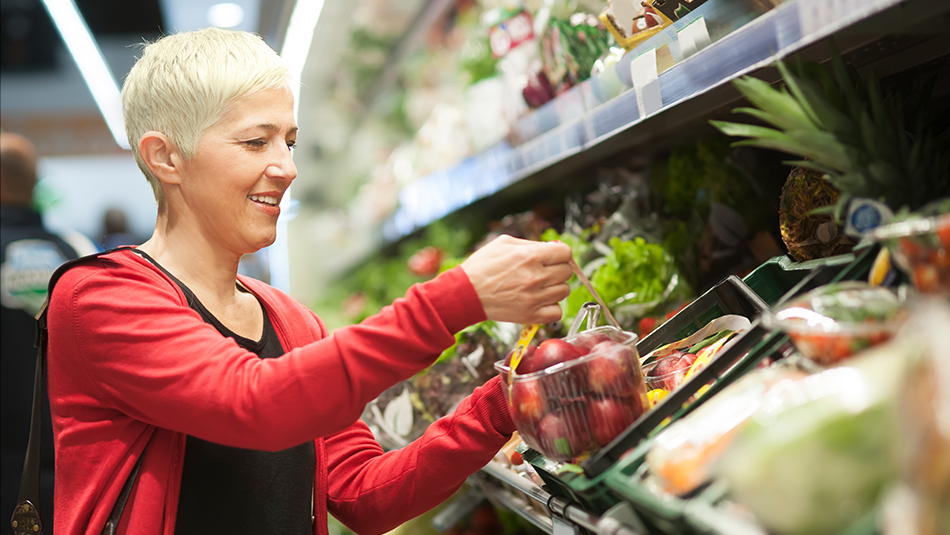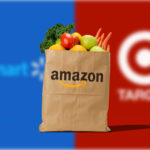
Grocers Scramble in the New World of Amazon
It has been 13 weeks since I last wrote about the effect Amazon’s takeover of Whole Foods was having on the supermarket industry. At that time, I suggested Amazon may have as hard a time getting up to speed on the grocery business as supermarkets will have getting into the home delivery business, and that the latter will certainly not go down without a fight.
Just one year ago the Food Marketing Institute estimated that online shopping for food and beverages would reach $100 Billion by 2025. Now they predict that number could be reached by 2022. There has been such a flood of activity that the tipping point has been reached.
Here are just a few of the activities that have occurred in the last Quarter.
Grocers Adopt Technology and Service to Remain Competitive
Let’s look at some of the ways the supermarket industry has leapt into the fray, making improvements and adding services in online shopping, order pick up and home delivery, and even ways they are experimenting with changing what a supermarket looks like.
At the beginning of the year, Publix announced a pilot project to open small-format stores approximately half the size of their regular stores, with a focus on home delivery.
Mid-February, HEB announced the purchase of Favor Delivery, another Texas-based company, to accelerate their home delivery capabilities.
Later Sam’s Club announced same-day delivery service through Instacart, the start-up that seems to be adding a new chain every day. They are already working with Sprouts, Aldi, Kroger, and Costco among others.
To provide customers with a more convenient shopping trip, Aldi announced they will take over space in Kohl’s stores to open supermarkets. Kroger is doing the same with Ace Hardware and has expanded its hand-held scanner program to 400 stores, allowing shoppers to scan and bag their own groceries. It also plans to expand its Prep+Pared meal kit program to more markets in 2018.
Walmart is rapidly expanding the number of stores equipped to engage with its smartphone app. Allowing customers to skip the checkout line, items are scanned while shopping and payment is finalized via a credit card linked to the app. The grocer is also offering prepared meals in 250 stores and plans to expand this to 2000 stores by year’s end. And their meal kits have reportedly been a big hit.
According to Progressive Grocer, 80% of Walmart shoppers make a list before going to the store. So the improved app, dubbed Store Assistant, allows for more flexibility in building lists and totals the pricing so shoppers know their basket total before they get to the store. The app also offers a map of each individual store. Future improvements will provide customers with a route map showing them the fastest way to get all the items on their list.
Walmart also partnered with Tasty to offer an easy way for customers to get all the ingredients for a specific recipe, while Amazon did the same with Allrecipes.com.
Speaking of Amazon, let’s take a look at what they’ve been up to in the last three months.
Amazon and Whole Foods Are Becoming More Integrated
Well, first off, they had a few stumbles. A new inventory management system left stores with empty shelves, multiple out-of-stocks, and perishables that were not fresh.
On a happier note, in March Whole Foods expanded its free two-hour delivery for Amazon Prime members beyond the original test markets (Austin, Cincinnati, Dallas and Virginia Beach) to two new markets – San Francisco and Atlanta.
A New York Times article in early March detailed the “Amazonification” of Whole Foods. The article stated the Prime two-hour delivery program will expand to all stores before the end of 2018. It also noted there have been some price cuts at Whole Foods since Amazon took over, but not a lot. Other changes include Amazon gadgets (Echo, Kindle, Fire TV) for sale in Whole Foods, Whole Foods private label items for sale on Amazon, and Amazon pick-up lockers in Whole Foods.
Speculation is also rampant Amazon will eventually push Whole Foods’ to add products like Coca-Cola to its shelves that don’t meet its current standards.
Oprah Also Loves Meal Kits, Too
And if all this wasn’t enough, Weight Watchers and Oprah just announced they will also be entering the meal kit market. Backed by the famous billionaire, Weight Watchers will be releasing a line of “quick prep” kits as part of their WW Healthy Kitchen line. The new kits will be sold at select grocers nationwide starting in the second half of this year.
Perhaps the greatest impact will be felt by perishables and produce.
Current Retail Climate May Be Good News for Branded Produce
What impact will all of these changes at retail have on the food industry? Obviously packaged foods manufacturers will have to be nimble and stay abreast of all the channel changes happening at an ever-increasing pace. How do they make sure they get their fair share of inclusion in meal kits? Do they need to develop different package sizes or forms just for use in meal kits?
Current Retail Climate May Be Good News for Branded Produce
What impact will all of these changes at retail have on the food industry? Obviously packaged foods manufacturers will have to be nimble and stay abreast of all the channel changes happening at an ever-increasing pace. How do they make sure they get their fair share of inclusion in meal kits? Do they need to develop different package sizes or forms just for use in meal kits?

Perhaps the greatest impact will be felt by perishables and produce. As pick-up and home delivery capture an increasing share of sales, consumers will be receiving produce they didn’t choose. In the past, packaged produce was the ugly stepchild of the produce department, usually offered as a bargain buy. Now, however, packaged and branded produce is considered a requirement. Produce branding gives consumers product quality assurance, as long as the brand remains consistent. In-store packaging makes it harder to determine product quality, but it provides protection during home delivery.
The extreme time pressure on consumers, and the need for convenience has led to the explosion of pick-up, meal kit, and home delivery options. Likewise, ready-to-eat produce, while often difficult to achieve, is what the consumer wants. The United Fresh Produce Association reports that in the packaged salad category segment, Completes/Kits, which include the dressing, toppings and sometimes even a fork, increased their dollar share +3.9 points to 32.8% of the category in 2017, while all other segments declined. Likewise, they report that 6 out of 7 value-added vegetable varieties increased both dollar and volume sales. Wherever possible, fresh produce should continue to provide consumers with items that deliver the convenience they are demanding, without sacrificing quality.






